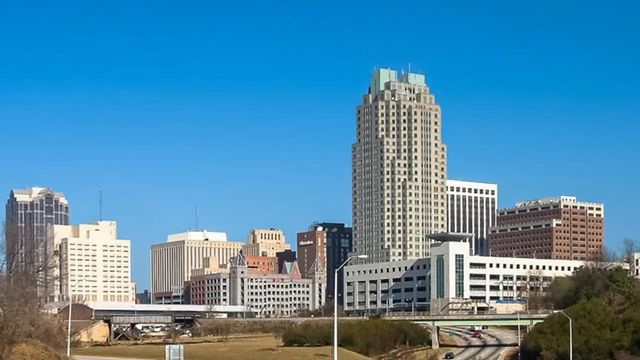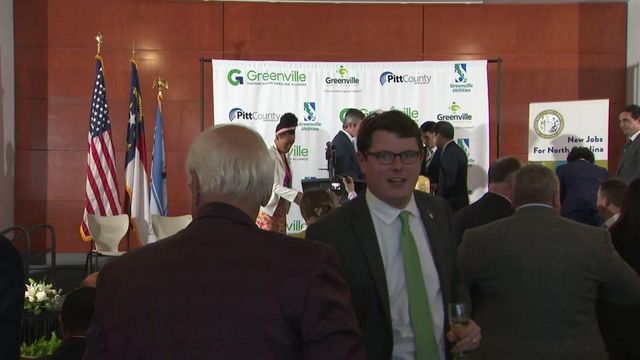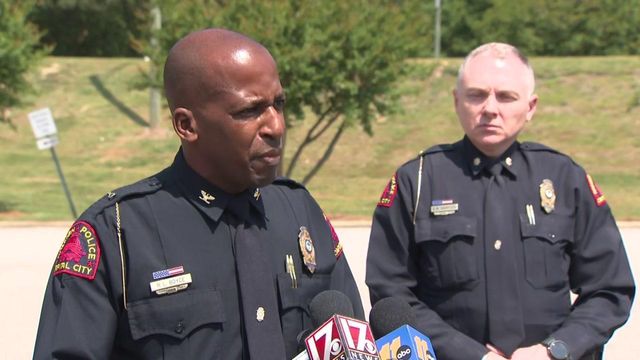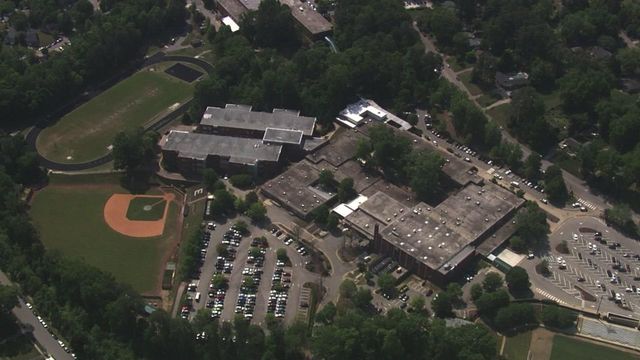Reshaping Raleigh: Here's what the future of the city's skyline could look like
The cranes rising around Raleigh are a sign of the growth coming to the city.
“I think it’s good for Raleigh,” said Raleigh resident Shelley Curtis, who lives in the Rochester Heights neighborhood. “I think it’s good for certain parts of Raleigh, but it’s not good for all parts of Raleigh.”
Curtis was born in 1959. Two years earlier, her parents built the house she still lives in. By 1982, their mortgage was paid off. But Curtis’ property taxes continue to climb. She questions whether she is getting her money’s worth.
“Taxes went up $531 in two years,” Curtis said.
She has noticed the growth of the city — there used to only be one skyscraper in downtown Raleigh when she was growing up.
“Raleigh has grown to the point where we never thought it would be as large as it is, and we’re not ready for that,” she said.
An October study out of the University of North Carolina at Chapel Hill ranked the region as the fourth-fastest growing economy in the country. Population projections from the state show the Raleigh area adding nearly 1 million people by 2050.
In 2001, Raleigh Skyline photographer Matt Robinson took his first shot of downtown.
“People want to see where they’re from. It represents them,” Robinson said.
Each picture Robinson has taken shows a snapshot of Raleigh’s rise.
When he started taking pictures, “You had to work to make it look bigger than it was, I guess,” Robinson said.
Kane Realty Corp. is working on several projects throughout Raleigh.
“I think it’s progress,” Kane Realty CEO John Kane said. “As a city you’re either growing or you’re dying.”
Kane Realty’s developments include proposals to build taller towers along Six Forks Road as high as 37 stories in the North Hills neighborhood.
On Tuesday, the Raleigh City Council voted to defer any action on rezoning North Hills until Dec. 6. It marks the same day four new city council members – Mary Black-Branch, Megan Patton, Jane Harrison and Christina Jones – are set to be sworn in.
WRAL News spoke with Kane on the rooftop of his office in North Hills, where cranes are building above what was an indoor mall when the developer bought it for $15.5 million in 2001.
Kane estimated his company has between $800 million and $900 million currently under construction throughout Raleigh from North Hills to the mixed-use development Downtown South. A proposed 20,000-seat stadium is the centerpiece for that $2.2 billion project planned on South Saunders Street at Interstate 40.
“People look at that and go “Oh, you’re building so much density. It’s going to add traffic,’” Kane said. “Well, no. Sprawl is what does that. Sprawl is what creates traffic.”
New Raleigh leaders to consider North Hills rezoning
Kane is caught in the middle of the city's debate over density of new development.
It included opposition Tuesday from Shane Collins and Larry Helfant, who lead a group of Midtown neighbors fighting against having taller towers built in North Hills.
"Traffic is going to worsen with construction, with people [and] with towers," Collins told the city council. “I mean, traffic on St. Albans [Drive] is stopped up all the time because of the projects going on.
“And, you’re going block Six Forks [Road] with construction [of] four giant towers.”
Helfant advocated for the city council to allocate funding for road improvements.
“They are critical to this project,” Helfant said.
Helfant estimated North Hills alone would add about 10,000 people to the area.
“These people will not be taking the bus,” Helfant said. “These people will be driving in and out. There is nowhere for these people to go.”
The developer has agreed to delay construction on the new towers along Six Forks Road until at least Jan. 1, 2026, giving the city more time to improve infrastructure at North Hills.
In September, city leaders also added a requirement for Kane Realty. The development must have at least 10% of its total units constructed after the 2,521st unit as affordable housing for households earning 80% area median income or less for at least 10 years. For every 10 units built after the 2,521st unit, one is required to be affordable housing for a 10-year period.
Data from the U.S. Census Bureau shows the median income for a household from 2016-2020 in the city of Raleigh was $69,720.
Based on industry estimates that a household spends no more than 30% of income on housing, rents would be capped at $1,394 using the Census Bureau's most recent data.
Also, the new city council members set to be sworn in have called for developers to be more responsive to the community before moving forward with rezoning.
“I think you need to do that where you can do that, but it’s not meant for everywhere,” Kane said of building vertically.
Where is Raleigh growing up and out?
Downtown’s PNC Plaza skyscraper is the tallest in the city at 40 stories. Since 2020, the Raleigh City Council has approved 26 rezoning requests that would allow developers to build towers 20 or 40 stories tall. As of November, there are another 13 are working their way through the city planning process.
Most of the development is happening downtown or in seven designated growth centers:
- Brier Creek
- Cameron/University
- Crabtree
- Midtown
- New Bern/WakeMed
- Northeast
- West Raleigh
The city’s 2030 comprehensive plan directs 60% of future growth to these areas and dozens of smaller mixed-use community centers. Half of that growth should happen along four future bus rapid transit corridors, which the city expects to be fully available by 2030.
From downtown the corridors run:
- North along Capital Boulevard
- South along Wilmington Street
- East along New Bern Avenue
- West along Western Boulevard
“What we’re trying to do is make those connections through transit, so we’re building communities that connect,” Raleigh Mayor Mary-Ann Baldwin said.
Critics of Baldwin and a pro-growth city council say they're giving developers a blank check to build to the limit before the infrastructure can handle the growth.
“I like it when a developer comes and has some certainty to their plans so they can tell you what they’re planning to put there,” Baldwin said. “It makes it easier to make those decisions, looking at the impact.”
It's tough to know exactly what the city skyline will look like, in part, because developers don't have to show specific plans when they go to city council for rezoning.
Patton told WRAL News she would like to change that after she’s sworn in next month.
"I think that does a lot of service to residents saying this is what we’re really trying to do here, and that’s missing in Raleigh,” Patton said. “I would like to look at some of these procedural changes that both allow us to provide new housing options and answer the questions our neighbors legitimately have.”
Impact on Raleigh neighbors
Curtis has fond memories of growing up in the Rochester Hills neighborhood.
“This is the only house that I have known as a family house,” she said.
Curtis has many of the same neighbors - now adults - that she had when she was a kid.
“We’re back together as if we could go outside and get on bikes and sleds, everything,” Curtis said.
Curtis said there are investors buying and flipping houses for profit.
“They’re going to up the value on it,” Curtis said. “That’s what they’ve done across the street. That’s what they’ve done down the street.”
Curtis worries families who've lived here for generations are getting priced out as the city grows up.
Robinson said he remembers when the PNC Plaza opened in 2008.
“It’s a different era now, and the buildings don’t go away,” he said. “They only add to what’s there.”
Robinson said there are construction cranes in areas you wouldn’t expect.
“That’s just a sign of progress, I think,” Robinson said.















